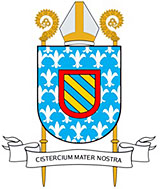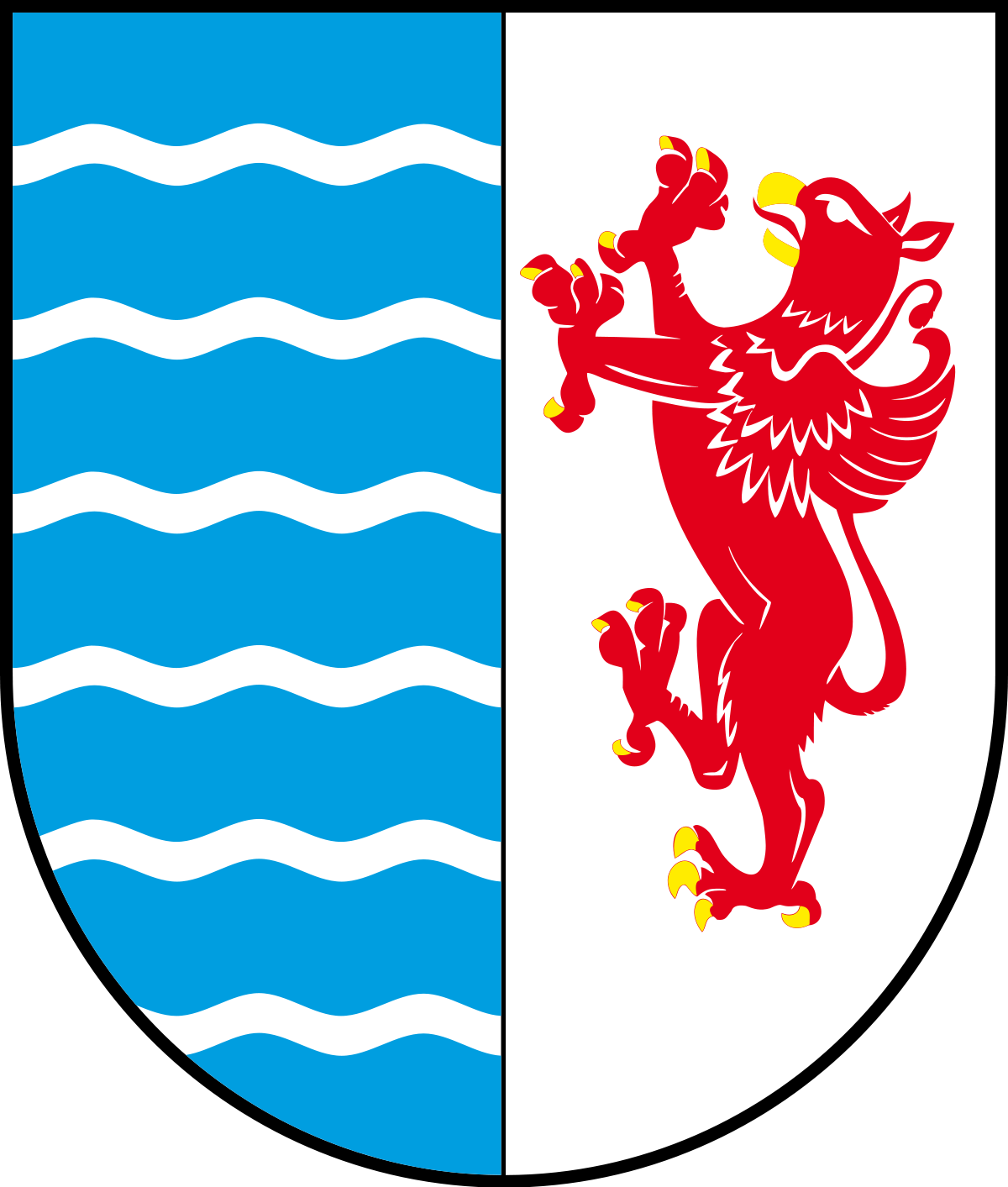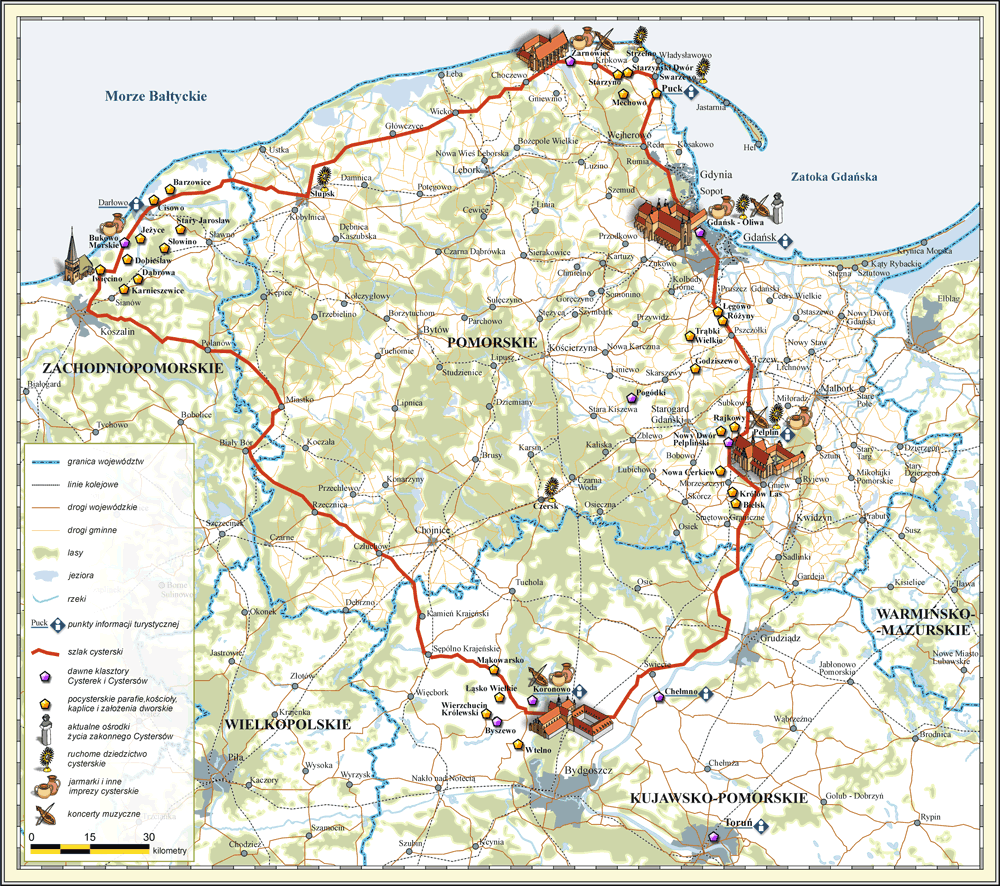Order
 The origins of the Order date back to 1098, when at Citeaux (Burgundy, near Dijon) Robert of Molesmes founded the Sacer Ordo Cisterciensis (abbreviated OCist.) – the Cistercian Order – with its origins in the Benedicine Order. It was a response to the need for a renewal of monastic life in the medieval Church. The essence of the Order is the renewed spirituality of the original rule of St Benedict of Nursia. On 19th of October 1100, Pope Paschalis II approved Citeaux as a separate, renewed Benedictine monastery. In 1119, Pope Calixtus II approved it as a New Order. The first four branches derived from Citeaux were monasteries established only in France: La Ferté (1113), Pontigny (1114), Clairvaux and Morimond (1115). Of the last two originate the filial lines of the orders in the Polish lands. The Cistercians owe their greatest spiritual development to the Order’s Chief mystic, St Bernard, later Abbot of Clairvaux (1112-1153).
The origins of the Order date back to 1098, when at Citeaux (Burgundy, near Dijon) Robert of Molesmes founded the Sacer Ordo Cisterciensis (abbreviated OCist.) – the Cistercian Order – with its origins in the Benedicine Order. It was a response to the need for a renewal of monastic life in the medieval Church. The essence of the Order is the renewed spirituality of the original rule of St Benedict of Nursia. On 19th of October 1100, Pope Paschalis II approved Citeaux as a separate, renewed Benedictine monastery. In 1119, Pope Calixtus II approved it as a New Order. The first four branches derived from Citeaux were monasteries established only in France: La Ferté (1113), Pontigny (1114), Clairvaux and Morimond (1115). Of the last two originate the filial lines of the orders in the Polish lands. The Cistercians owe their greatest spiritual development to the Order’s Chief mystic, St Bernard, later Abbot of Clairvaux (1112-1153).
Cistercians in Poland
The first Cistercian monks from Western Europe arrived on Polish soil relatively quickly, as early as 1240s, initially reaching Greater Poland (Łekno) and Lesser Poland (Jędrzejów). The beginnings of the Cistercians in Polish lands occurred in the period of the most dynamic development of the Order in Europe, which covered the years 1140 – 1153, i.e. the period of the pontificate of Eugene II and the Times of Bernard of Clairvaux.
After the first foundations, the Order quickly spread to other districts of politically fragmented Poland, also covering the areas of Eastern Pomerania and Kuyavia.
In the area of our interest, the Pomeranian Loop of the Cistercian Trail, the Cistercians settled the earlies at Oliwa (1178-1186) in the valley of the Oliwa Brook, through the foundation by the family of the East Pomeranian dukes and the monks of the Kołbacz monastery (with monks from Danish convent from Esrom). To Bukowo Morskie the Grey Monks were invited from Draguń in Mecklenburg by the duke of Danzig, Świętopełek II. The exact date of their arrival remains unknown, but the first bestowal dates 1248-1253.
Cistercians in Pomerania
THE POMERANIAN CISTERCIAN TRAIL
The Pomeranian Province features three main post-Cistercian complexes: Oliwa and Pelplin (male monasteries) and also Żarnowiec (female monastery). Byszewo-Koronowo (the seat of the grey monks), as well as Chełmno and Toruń (old centres of monastic life of the Cistercian nuns), are included in the administrative reaches of the Cuiavian-Pomeranian Voivodeship. These centres, as well as the old Cistercian abbey complex in Bukowo (located within the area of the West Pomerania Province), have become part of the organisational and promotional activities of the Pomeranian Cistercian Trail. Pomeranian Loop of the Cistercian Trail is one of the five loops that constitute the Cistercian trail network in Poland, as well as belonging to the European Culture Trails.
The past magnificence and affluence of the mentioned Cistercian abbeys is reflected not only by the entire monastic complexes, but also by numerous smaller buildings (churches, chapels, manor houses and farm buildings) scattered around the main seats of the grey monks and nuns. All these locations constitute the cultural appeal of the Pomeranian region.
Co-financed from the funds of the Pomeranian Voivodeship and the Tczew Poviat








